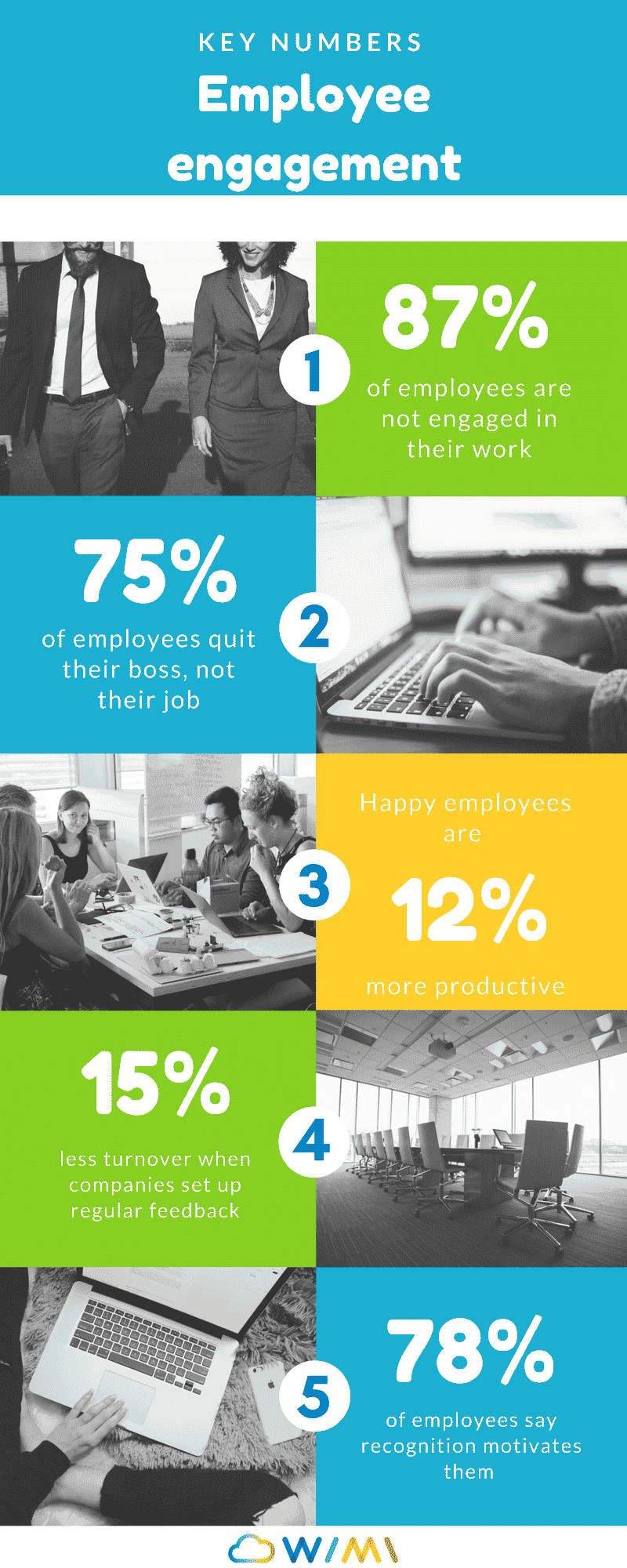Engaging with employees has become a new preoccupation within companies. The digital revolution encourages this, since it brings the way we work into question; corporate social networks, telecommuting, access to the corporate messaging service from home. It is said that an employee is engaged when he challenges himself for his company and when his attitude increases motivation among his coworkers. Employee engagement is defined by an active and positive attitude which takes into consideration personal satisfaction. Now that Y and Z generation are entering the business world, employee engagement is often associated with wellbeing. Indeed, an engaged employee is surely always a happy employee, however, is a happy employee going to engage himself for his company? This is the question this article will explore.

An engaged employee doesn’t consider his work as a source of income only but also as somewhere he can accomplish himself and be fulfilled. An engaged employee cares to maintain an atmosphere which is favorable to teamwork and based on trust, communication, and transparency. However, an engaged employee wants to be recognized for his work. So, it can be hard to tell if his motives are to be recognized or to develop his skills and creativity by committing to his work.
In any case, and whatever reasons, engaged employees demonstrate more dynamism and productivity. Moreover, they are attached to the company even if it’s not sure they won’t leave it if things go wrong. According to recent studies, engagement is constant as long as workers find what they are looking for within the company. Nevertheless, they are unifying within work teams. So, it is important to create engagement among young generations of workers within different teams and projects.
How can I improve employee engagement?
Relationships with managers and leaders are quite important for collaborators who need recognition, respect, stimulation, and motivation. They are looking for a healthy and challenging environment. A manager needs to set up an atmosphere favorable to teamwork. Relationships with superiors are so important according to workers that 75% of them don’t quit their job but their boss. To limit these losses, employee engagement allows not to work in only a ratio of power but rather to collaborate for the company’s projects whose leaders are just representatives.
Wellbeing is a sure thing to take into consideration in the process. An unhappy employee is never engaged. To improve wellbeing, we recommend you read why it is so important and these 10 tips to improve it on the Wimi Blog. However, an employee being happy at work doesn’t necessarily mean he is engaged.
In order to create more engagement, the company’s values need to be clear, visible, inspiring, applied to management, and felt by collaborators. The employee will feel involved in a group dynamism. To achieve all that, team-building initiatives can be put into place when budgets allow it.
An employee needs to have a moment to give feedback in all the steps of projects. Listening among collaborators allows everyone to feel involved personally. These sessions can also be a good moment to congratulate and encourage employees for their good work. Millennials are especially sensitive to this approach since they have a strong need for recognition in their work.
Using Wimi to improve employee engagement
Wimi is the all-in-one solution for collaborative work which allows collaboration within teams more transparent, fluid and effective. Thanks to this tool, your work teams will be able to work better while saving time, so it will improve their overall wellbeing. You can access all your files, messages, tasks from anywhere on a computer, a tablet or even a smartphone! As a consequence, it will be easier to telecommute. Employee engagement is improved when employees have easy and effective access to work files.
Try our solution, free of charges, during 14 days by clicking here!










